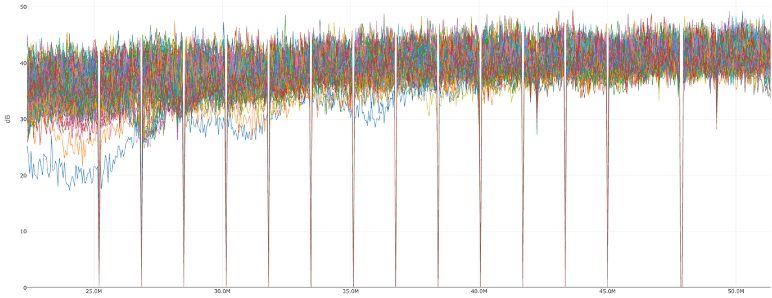Networks
Increase Upstream Reliability and Capacity with Optimized Profiles

Network usage patterns have shifted in unprecedented ways in the last few months with vast swaths of the population staying at home. A substantial increase in network traffic has been observed from homes with people collaborating for work and children learning over the Internet with online school sessions and material. The access networks have seen a transition of the peak weekend levels of traffic become the new normal throughout the week.
In this time of network traffic increase, reliability and capacity are increasingly important. Upstream reliability is fundamental to the network experience as seen by the end user in the home. For DOCSIS 3.1 and 4.0 networks configuring profiles is the key to maintaining a reliable channel while simultaneously optimizing capacity. Profiles define the modulation orders used on the channel, with higher modulation orders allowing for more bits of information to be communicated per modulation symbol.
In a previous blog post, we discussed downstream profile management. In this blog, we focus on upstream profile management which differs from the downstream due to the structure of the Hybrid-Fiber-Coax (HFC) plant and the nature of bursty transmissions from a cable modems (CM).
In the downstream direction, there is one location from where the signals enter the HFC plant, specifically the cable modem termination system (CMTS) in the headend. The operator has control of the signal at that point and along the network, to ensure it reaches every CM. From the head end to the CM, the RF signal fans out in a star topology network in a point to multipoint (P2MP) fashion. It is the opposite on the upstream/return path: the RF signals enter the plant from every home that is attached to the plant, and all of those signals combine together as they travel to the headend. Typical of all P2MP networks, the noise from every device on the network gets combined as it travels upstream and is finally received on the upstream port at the CMTS. This is known as the noise funneling problem, as shown in the diagram below. Thermal noise at the amplifiers and fiber optic link noise are common sources of upstream noise. Other noise sources which ingress into the upstream path include impulse noise from loose connectors, unterminated splitters or taps, cracked cables, common path distortion due to corroded connectors, clipping distortion etc.

Simple HFC diagram showing US Noise funneling
Thus, in the upstream, the noise from every house and every network element gets accumulated and is seen at the upstream receiver on the CMTS. Now a CMTS receiver can measure the received modulation error ratio (RxMER) for each CM, see some example measurements from a live network in the diagram below. In the upstream, this signal to noise signature for each of the CMs (that are sharing the upstream channel) starts looking very similar, as they all share the same noise across the channel with slight differences due to the signal levels itself. This means common profiles can be designed for many CMs experiencing similar noise conditions. Most CMs will be able to use a common profile. For CMs which suffer more noise, they can be put into a different profile optimized for their particular noise environment. The modulation orders within a profile can vary appropriately across the spectrum as per the noise levels in that part of the spectrum.

Upstream measured RxMER for CMs on a D3.1 OFDMA channel (Data from a European Operator)
The upstream Profile Management Application (PMA) can automate this design of the profiles on various upstream channels across various segments in the cable plant. Reading the upstream RxMER from the CMTSs on the network, processing the RxMER information with intelligent algorithms to create profiles, and then configuring the newly optimized profiles on the CMTS are the primary functions an upstream PMA solution accomplishes. Configuring optimized profiles brings solid reliability to the upstream network connection and also increases the capacity in parts of the spectrum which can accommodate higher modulation orders.
Many cable operators across the world are now turning on upstream OFDMA channels and leveraging the upstream PMA capability to automate the creation of profiles for their D3.1 upstream OFDMA channels.
If you are interested in discovering more details about upstream or downstream PMA, or setting up a field trial, please feel free to contact us to receive more in-depth information.




